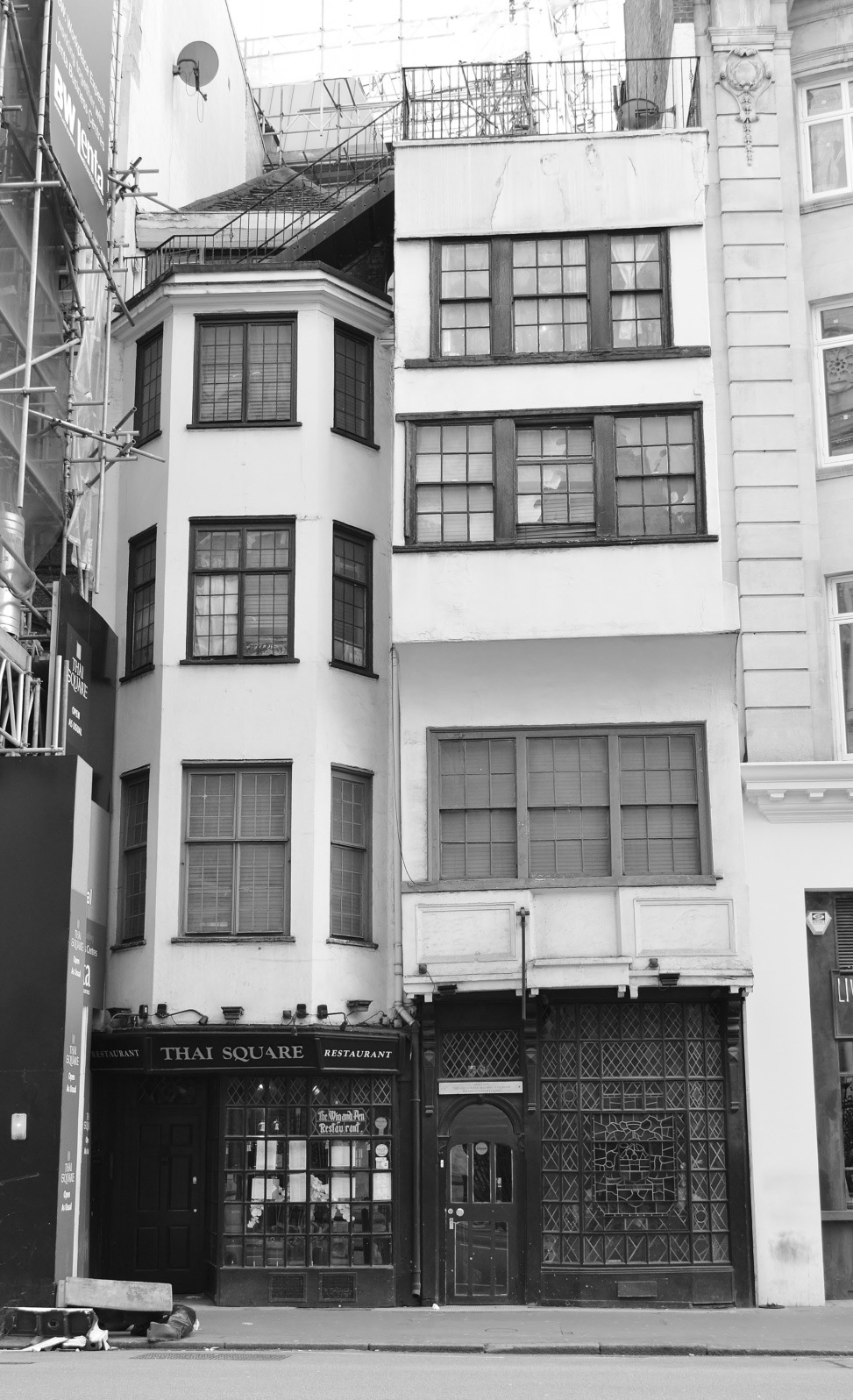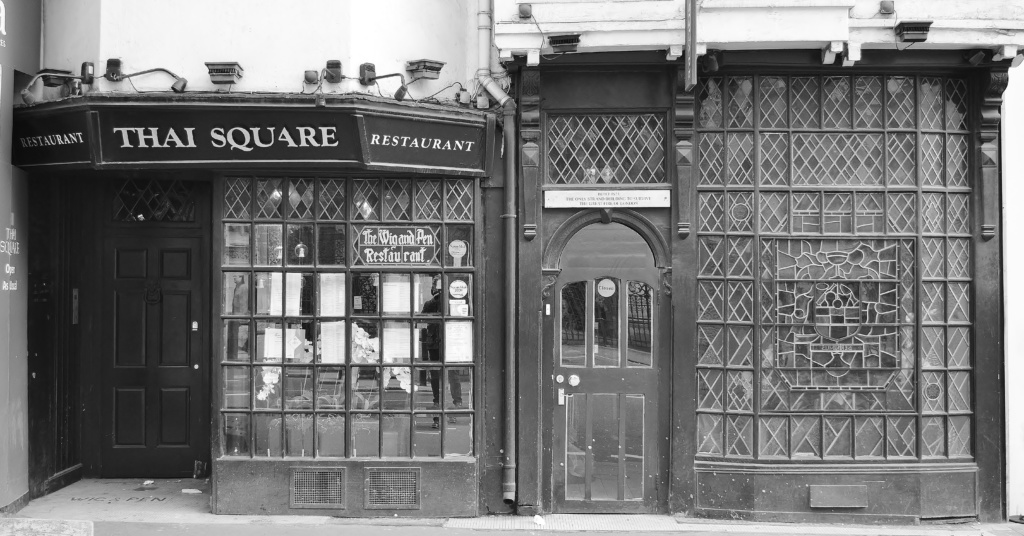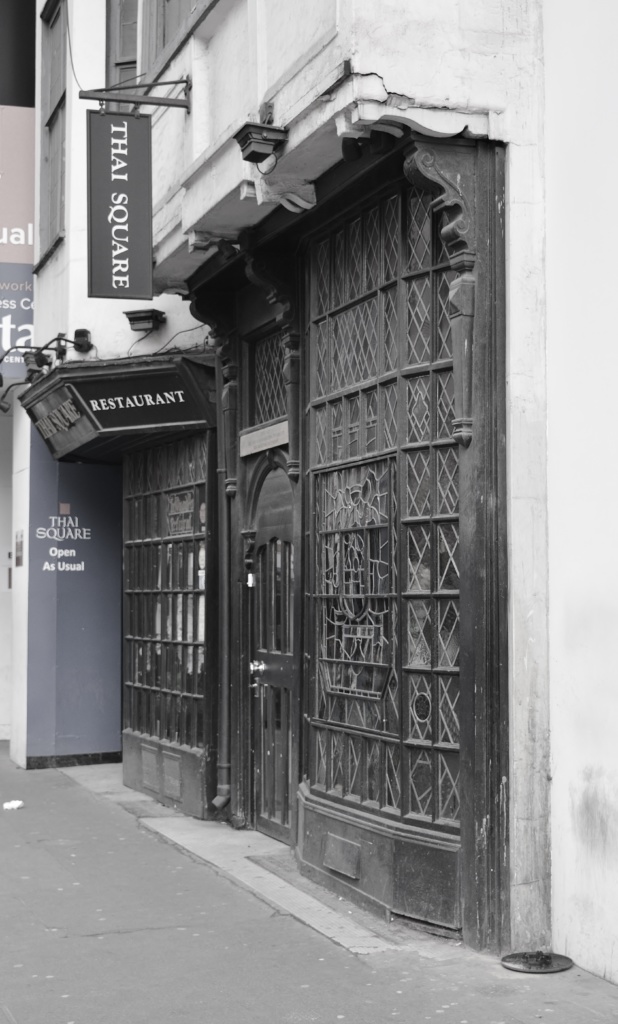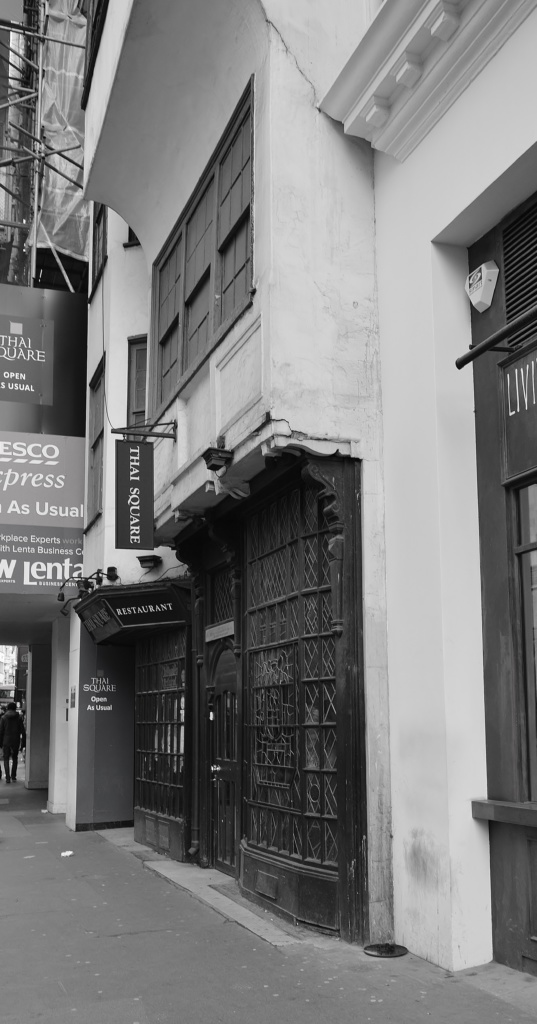There they are, huddled together for strength against the prevailing and uncaring winds of this modern world.
Known to the postman as 229-230 Strand and home to the Thai Square at Wig and Pen restaurant, they stand opposite the Law Courts at the point where workmanlike Fleet Street flows into and mixes with the altogether more upmarket Strand. These two roads are the direct route from the old City of London (founded in its modern Roman incarnation in the first century AD) in the east to the new-fangled City of Westminster (founded in only 1540) which sprung up around Westminster Abbey in the west. And 229-230 Strand is at its mid-point.
These are among the last standing examples of what London looked like before the Great Fire swept all – or most – before it in 1666. They were built in 1625 for the gate keeper of Temple Bar, which was the gate into the City of London from the west when much of that land beyond was still fields. Temple Bar was a point of restricted entry for people bringing goods into the City to trade and was also no doubt a place to impose a few gentle taxes upon the good trader folk as they entered. Severed heads of executed villains were stuck on the spikes of Temple Gate as a warning to those coming in to the city that they must behave. The heads became a tourist attraction and the gate keeper saw commercial opportunity, setting himself up to sell meat and bread to the gawping hordes. It is still a hostelry today.
As with most old buildings, these ones are said to be haunted. Not by any old riff-raff mind you. The Wig and Pen claim Oliver Cromwell – a man who knew a thing or two about severed heads himself – as their spectre.
For most of the twentieth century, they were the location of the Wig and Pen club, where lawyers (from the Courts and the nearby Inner and Middle Temple) drank with journalists from the newspapers. But as a consequence of the newspapers leaving Fleet Street from the 1980’s, taking their notoriously thirsty employees with them, the club closed in 2003. The present incumbents, Thai Square, have been in situ pretty much since then and retain the Wig and Pen name.
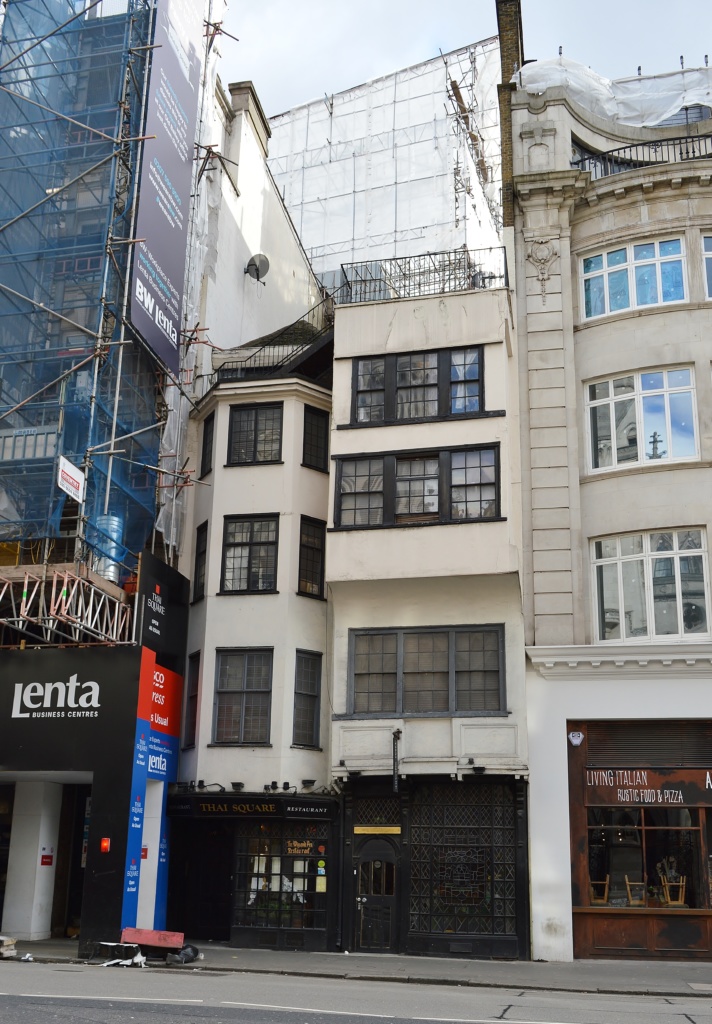
These buildings are not maintained in a rarified museum, they stand shoulder to shoulder with modern properties and put up with the incovenience of the building works.
